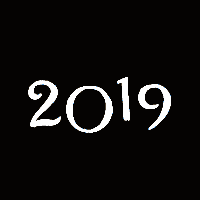When I think back on the musical events of the past decade, I think first of the sound of a composer talking. At the end of 2011, in the midst of the Occupy Wall Street movement, Philip Glass spoke to a crowd that had gathered on Lincoln Center Plaza. His opera “Satyagraha” had just been performed at the Met, and a crowd of protesters were registering the discrepancy between the opera’s Gandhian ideals and modern economic reality. Glass, accepting their point, took hold of the human microphone and led a chant of one of the opera’s Sanskrit texts: “When righteousness withers away and evil rules the land, we come into being, age after age, and take visible shape, and move, a man among men, for the protection of good, thrusting back evil and setting virtue on her seat again.” When I wrote up the event for my end-of-year summary, I included a sentence from Virginia Woolf’s “The Waves,” one that has become a kind of mournful mantra: “One cannot live outside the machine for more perhaps than half an hour.”
New Yorker writers reflect
on the year’s best.

Righteousness continues to wither away; evil is trending; a time or space outside the machine may no longer exist. Major classical-music institutions are generally too enmeshed in networks of power to make meaningful gestures of resistance. Orchestras and conservatories, no less than the National Basketball Association, stay silent on increasingly dire human-rights abuses in China. The Salzburg Festival is accepting money from Gazprom, a crucial component of Vladimir Putin’s globally corrosive regime. Donald Trump has no interest in classical music, yet many of the plutocrats who support domestic performing-arts institutions welcome his policies. Still, I cling to the idea that music can play a constructively antagonistic role in a monopoly culture. The voices that matter most are those of living composers, who occupy a perennially uncomfortable position in an obsessively nostalgic classical ecosystem. They are, to adapt a phrase from Theodor W. Adorno, the splinter in the eye that becomes a magnifying glass.
In any case, it has been a chaotically great decade for new music. The well-worn idea that twentieth-century avant-garde exhausted the possibilities of musical language is belied by the likes of Kate Soper’s bravura philosophical monodrama “Ipsa Dixit,” Chaya Czernowin’s engulfing war requiem “Infinite Now,” Liza Lim’s fine-spun multicultural song cycle “Tongue of the Invisible,” and Ashley Fure’s molten soundscape “The Force of Things.” It was also a decade in which veteran artists made statements of unstinting power: Meredith Monk’s “On Behalf of Nature,” a plea for a suffering planet; and Laurie Anderson’s “Habeas Corpus,” a monumental critique of the American torture regime. That these are all works of women is evidence of a long-awaited, though far from complete, revolution in a patriarchal profession.
Although visceral experimentalism seemed to make the strongest impact—I think also of Michelle Lou’s tumultuous “HoneyDripper” and Jürg Frey’s ethereal Third String Quartet—conventional forms were hardly depleted. George Benjamin’s neo-medieval opera “Written on Skin” offered visions of refined savagery; György Kurtág’s Beckett opera “Fin de Partie” had the aspect of the last twentieth-century masterpiece. Andrew Norman’s “Sustain” and John Luther Adams’s “Become Ocean” sketched fresh futures for orchestral music. The latter’s “Inuksuit,” performed on both sides of the U.S.-Mexico border, gave a glimpse of a utopia in sound.
It was a decade of sprawling music-theatre spectacles, operatic or otherwise. None was more astounding than Yuval Sharon’s citywide Los Angeles fable “Hopscotch,” although two Stockhausen productions—the Birmingham Opera’s “Mittwoch” and the Holland Festival’s “aus LICHT”—came close. I also cherish memories of Peter Sellars’s St. Matthew Passion with the Berlin Philharmonic; of the touring revival of Philip Glass’s “Einstein on the Beach”; and of Patrice Chéreau’s valedictory staging of “Elektra” in Aix-en-Provence, with a hypnotic vocal standoff between Evelyn Herlitzius and Waltraud Meier. The Met made amends for its “Ring” debacle by presenting Kaija Saariaho’s “L’Amour de Loin” and by mounting John Adams’s “The Death of Klinghoffer” in the face of a misbegotten protest.
The Los Angeles Philharmonic kept its place at the forefront of American classical music, delivering a stupendous centennial season. The New York Philharmonic began the decade with formidable programming under Alan Gilbert. At Carnegie Hall, the Minnesota Orchestra and the Oregon Symphony proved that smaller-budgeted orchestras can outpace international heavyweights. The strongest instrumental début of the decade was that of Igor Levit, in 2014; the pianist’s subsequent achievements have exceeded heady expectations. The same may be said of the conductor Mirga Gražinytė-Tyla, who made her American début, at the Hollywood Bowl, in the same year. As for the established stars of the profession, none gave more satisfaction than Yo-Yo Ma, who, in a solo Bach outing at the Bowl, held a crowd of seventeen thousand spellbound. For the better part of three hours, the machine stayed still.
Notable performances of 2019
Philip Venables’s “4.48 Psychosis” at the Prototype Festival, January 6th
Thomas Adès’s Piano Concerto in Boston, March 7th
Tyshawn Sorey at the Kennedy Center, March 29th
Stockhausen’s “Licht” in Amsterdam, May 31st to June 2nd
Meredith Monk’s “ATLAS” at the L.A. Phil, June 11th
“The Black Clown” at Mostly Mozart, July 26th
David Byrne’s “American Utopia,” October 31st
The Danish String Quartet in Berkeley, November 10th
Hans Abrahamsen’s “The Snow Queen” at the Royal Danish Opera, December 3rd
Chaya Czernowin’s “Heart Chamber” at the Deutsche Oper Berlin, December 6th
Notable recordings of 2019
Bruckner, Symphony No. 9; Manfred Honeck conducting the Pittsburgh Symphony (Reference)
Weinberg, Symphonies Nos. 2 and 21; Mirga Gražinytė-Tyla conducting the City of Birmingham Symphony Orchestra, with the Kremerata Baltica and Gidon Kremer (DG)
Beethoven, Complete Piano Sonatas; Igor Levit (Sony)
“Prism II”: Bach, Fugue in B Minor, Beethoven, Quartet Opus 130; Schnittke, Third Quartet; Danish String Quartet (ECM)
Andrew Norman, “Sustain”; Gustavo Dudamel conducting the L.A. Philharmonic (DG, digital only)
“Morton Feldman Piano”; Philip Thomas (Another Timbre)
George Benjamin, “Lessons in Love and Violence”; Stéphane Degout, Barbara Hannigan, Gyula Orendt, Peter Hoare, Samuel Boden, Benjamin conducting the Orchestra of the Royal Opera House (Nimbus)
“Speak, Be Silent”: works of Chaya Czernowin, Anna Thorvaldsdóttir, Mirela Ivičević, Liza Lim, and Rebecca Saunders; Riot Ensemble (Huddersfield Contemporary Records)
Zosha Di Castri, “Tachitipo” and other works; Ekmeles, ICE, JACK Quartet, Talea Ensemble, Yarn/Wire, Julia Den Boer (New Focus)
Ockeghem, Complete Songs, vol. 1; Blue Heron (BHCD)
“Facce d’amore”: Arias of Cavalli, Handel, Scarlatti, etc.; Jakub Józef Orliński, with Maxim Emelyanychev and il pomo d’oro (Erato)
Olga Neuwirth, “ . . .miramondo multiplo . . . ,” “Remnants of Songs,” “Masaot / Clocks without Hands”; Ingo Metzmacher conducting the Gustav Mahler Youth Orchestra, with Håkan Hardenberger; Susanna Mälkki conducting the ORF Radio Symphony, with Antoine Tamestit; Daniel Harding conducting the Vienna Philharmonic (Kairos)

